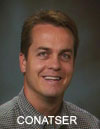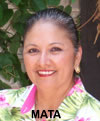Extended School Year Services
for Adapted Physical Activity
written by Philip
Conatser, University of Texas at Brownsville & Zelma
Mata, The University of Texas at Brownsville & Texas
Southmost College
During the last month(s) of the school year, students with
disabilities should be tested on overall motor ability (fitness,
gross/fine motor, sports skills). Assessment should be used
to guide instruction and placement which could include extended
school year service (EYS) opportunities. This article will
present how EYS could apply to some students with disabilities,
and ideas for different types of assessments.
EYS is usually a summer Individual Educational Plan (IEP)
that applies to all the curriculum areas including physical
activity. The term EYS means special education and related
services that are provided to a child with a disability beyond
the normal school year of the public agency. The EYS is in
accordance with the child's IEP, and is of no cost to the
parents of the child, and it meet the child's individual and
unique needs.
Usually a student will qualify for this program for the following
reasons:
- Recoupment is in the fall, meaning a pre-test will be
taken at the end of spring quarter, then a post test is
given six weeks after school has started in the Fall. If
the student has not regained skills to pretest level, he/she
could qualify for EYS the next summer.
- Degree of progress toward IEP objectives:
Some areas of the curriculum may need to be continued if
the student is expecting a breakthrough or a new skill is
just emerging. For example, a student with autism is just
beginning to communicate and play with other students during
PE. In order to continue this skill development, these skills
may need to be fostered during the summer.
- The nature and/or severity of
the disability: Summer break can cause significant delays.
For instance, if a student has a progressive disorder such
as muscular dystrophy or a condition that could worsen such
as cerebral palsy, concerning maintaining range of motion
(ROM) and strength, the student could have EYS.
In short, if the IEP team feels the student could have
significant benefit from EYS, then the student could receive
EYS in the summer. Further, during the IEP meeting EYS
must be discussed and a physical education instructor
should be present, not only for input on next year's objectives,
but possible EYS opportunities. Note: The IEP meeting
can be conducted at any time, even during the summer.
Summer IEP meetings usually only addresses EYS issues
(e.g., objectives, placement, services) with parents,
someone from the administration, and relevant teachers
present.
Physical education teachers will need to write summer IEP
short term objectives, which could include new skills or a
continuation of previous skills. Usually EYS is only implemented
for a few months. Therefore, the number of skills to be included
depends on the students' ability and the time allowed for
instruction. For example, in the summer if you have 45 minutes
a day, three days a week for eight weeks, that gives a total
of 1000 minutes. Shooting for 85% actual on-task time, then
the student would probably only have around 850 minutes. In
general, it takes around 3 to 6 hours to learn a skill, and
30 hours to become somewhat proficient at a given skill.
However, students with disabilities may take at least three
to four times longer to learn a skill than a regular student;
therefore, if the student with a disability takes 10 to 15
hours to learn a skill, then only one or two skills should
be taught. Note that for some students with progressive disorders,
such as muscular dystrophy, maintaining skill level is an
accomplishment. Therefore, five or six skills could be addressed
during the summer.
Before the IEP meeting the student must be assessed. The
assessment should include basic safety issues, skill performance
- both strengths and weaknesses, best mode of communication
(verbal, sign language, pictures, physically shaping), placement
(home, school, rehabilitation center) and who (physical educator,
adapted physical education) will conduct services. The assessing
will also guide the development of goals and objectives that
may or may not build on skills already obtained.
Since the instructor has limited time to work on skills,
it is of vital importance to use the time had wisely and effectively.
For example, if instruction is in the home, make sure the
students is ready (clothed, fed, bathroom), the environment
is prepared (equipment, floor space, outside space) and all
other needed factors (siblings, pets, weather) are appropriate
for learning prior to arrival.
Post assessment of student objectives must be performed.
Post assessment results can provide evidence to support the
EYS program, as well as help with modifications to the IEP
for the upcoming school year. Post assessment also helps students
and caregivers, and instructors have a sense of accomplishment
and success. In the case of EYS remember to specifically state
why the student should receive these services. For example,
Bill requires one-on-one instruction through the summer because
he has just began using his walker, and there is a great chance
this skill will not be recoupable within 6 week for the next
school year.
When choosing assessments look at the "big picture"
first. What skills are relevant for the students to be successful
and fulfill the IEP goals, what physical activities do the
regular students do in school, what sports are available (Special
Olympics, Boys & Girls club) in the community, and what
goals do the parents want for their child? Physical educators
should determine the present level of performance by using
a norm based, criteria based, and a functional ability test
in a normal gym class setting. There should be a minimum of
3 types of tests administered over several testing sessions.
The assessment should also reflect the perspective and insight
of all professionals involved with the student.
When writing an IEP for the summer EYS use positive comments
on the current skill level based upon the assessment results.
Objectives could include movement skills, flexibility, cardiovascular,
sports, and behaviour modifications. All objectives need to
be measurable (e.g., 3 out of 4, 80% of the time, increase/decrease
by 4%), duration of services, and a place for post test results.
Also include equipment needs, safety issues, and modifications
that will be provided. Objectives should not only come from
the assessments used for placement and services, but also
functional skills that are applicable for the student.
For example, Bill who has cerebral palsy will walk using
his walker on level ground for 5 minutes 80% of the time.
Objective criteria can also focus on several different components
of a given skill, such as by reducing amount of help needed
(assisted, unassisted), increasing consistency in performance
(stopped, did not stop), and/or the actual performance of
the skill itself (uses/does not use swing phase between toe
off to heal strike). The instructors could also measure the
exact time it took to accomplish the skill and/or measure
the exact angles achieved.
Instructors only need to use the skills from an assessment
that are appropriate for the student, such as determining
if a student with cerebral palsy can or cannot touch their
nose, head, or subscapula for flexibility instead of the "Sit-Reach"
test. For a student with autism or intellectual disability,
on the "Pacer" test assess students' ability to
run in a straight line, line-up on the starting line, runs
to opposite sideline and back, or can react to the pacing
signal. Although, comparable flexibility scores or cardiovascular
capabilities are not being tested, skill performance is being
test and evaluated; thus, giving a means for assessing improvement
and program planning. Remember, instructors can virtually
give numerical values to any skill. Note, in most cases, individual
comparison on improvement is more appropriate than comparing
the student who has a disability to the "National Norm."
Some examples of assessments used for students with disabilities:
A. Physical fitness and
sports tests.
- Test of Physical Fitness
- Test of Sport Skills
- Conatser adapted aquatics swimming
screening test
- Project
ICAN: Team Sports, Dance and Individual Sports Module,
Backyard/neighborhood Activities Module, Outdoor Activities
Module
- Project
Mobility
- AAHPERD Skill test manual:
Basketball, Volleyball, Softball, Football
- Special
Olympics program guides for: Alpine Skiing, Gymnastics,
Unified Sports, Volleyball, Aquatics, Hockey, Football,
Tennis, Aerobics, Horseshoes, Figure Skating, Equestrian,
Athletics, Motor Activity Cycling, Soccer, Basketball,
Nordic Skiing, Distance, Rowing, Bocce, Power lifting,
Running, Softball, Croquet, Bowling, Roller skating,
Team Handball
B. Motor skills test.
- Developmental Scales & Schedules
- Test of Fundamental Motor
Patterns
- Test of Motor Ability
- Test of Perceptual-Motor
Competency
- Bender visual-motor
gestalt test
- Block perceptual-motor development
checklist
- Block perceptual-motor screening
for individuals with multiple handicaps
- Dayton sensory motor awareness
survey
for 4 and 5 year olds
- Informal screening of perceptual-motor
skills
- Kansas
test of perceptual-motor dysfunction
- Motor
perceptual survey
- Moving embedded figures test
- The Purdue perceptual-motor
survey (PPMS)
- Sensorimotor integration for
developmental disabled children: handbook
- Sherrill perceptual-motor
task for physical education
- Southern California perceptual
motor test (SCPMT)
Good luck and have a great summer!
(back
to pelinks4u homepage) |





